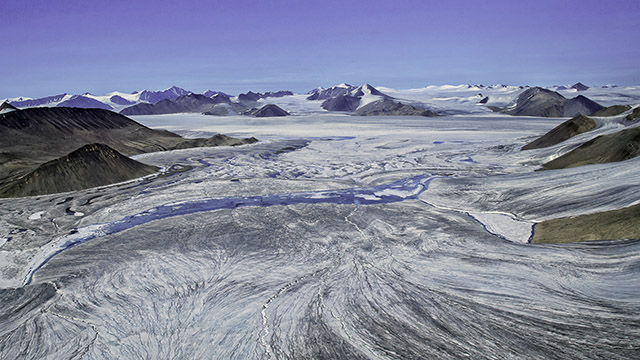
International Year of Glaciers’ Preservation: protecting Nunavut’s frozen heritage
Sirmilik National Park
Glaciers are an integral part of Nunavut’s landscape and cultural heritage. These ancient ice formations have shaped the land and support diverse Arctic wildlife. In 2025, the United Nations (UN) International Year of Glaciers’ Preservation highlights the urgency of protecting these frozen wonders from the impacts of climate change. Parks Canada and Inuit are committed to preserving the glaciers of Nunavut’s national parks and raising awareness of their significance, while also contributing to the broader effort of protecting and restoring resilient ecosystems across Canada’s network of protected areas.
Glaciers in Nunavut’s national parks
Nunavut is home to three national parks where glaciers define the landscape and even inspire their names:
Sirmilik National Park – The Place of Glaciers

Sirmilik, meaning "place of glaciers" in Inuktitut, is a stunning Arctic wilderness. Towering ice formations dominate the park’s landscape, providing habitat for diverse wildlife and offering breathtaking views. Visitors to Sirmilik can witness the impressive glaciers that have shaped the land over millennia. Parks Canada actively monitors glaciers in Sirmilik and other national parks to track climate change and its effects on Arctic ecosystems. Through a combination of Inuit knowledge and Western science, the Climate Crew explores a more complete picture of glacial melt and its impact in northern protected areas. Watch this incredible video to watch their work in action!
Learn more about Sirmilik National Park
Auyuittuq National Park – The Land That Never Melts

Auyuittuq, meaning "land that never melts," is home to the Penny Ice Cap, a remnant of the last Ice Age. This vast glacial expanse feeds rivers and supports delicate Arctic ecosystems. Monitoring programs in Auyuittuq help researchers track changes in the ice and understand the impact of a warming climate on this fragile environment. Parks Canada collaborates with Inuit and academics to conduct important research, improving our understanding of current and future climate change impacts. Through the Auyuittuq National Park Inuit Knowledge Working Group, Inuit have provided important observations regarding changes in glaciers in the park.
Explore Auyuittuq National Park
Quttinirpaaq National Park – The Top of the World

Quttinirpaaq, meaning "top of the world," is Canada’s northernmost national park. Its ancient glaciers and ice caps hold vital climate records. Research conducted here provides crucial insights into Arctic climate change and ice loss. Ongoing glacier research helps scientists understand the park’s unique ecosystem and the broader implications of climate change.
Discover Quttinirpaaq National Park
The importance of glacier preservation
The UN International Year of Glaciers’ Preservation 2025 presents an opportunity for Canadians to learn more about the impacts of climate change on snow, ice, and water resources across the country. Glaciers serve as critical freshwater sources, influence global sea levels, and support Arctic biodiversity. However, scientific research in Nunavut’s parks has shown they are melting at a rapid pace due to climate change, posing challenges for local ecosystems and affecting communities that rely on them.
Parks Canada actively monitors glaciers in national parks across the country to better understand how these changes will impact groundwater tables, surface water runoff, agricultural practices, and the availability of drinking water downstream. Research initiatives, such as the Glacier Monitoring and Assessment of the Penny Ice Cap in Auyuittuq National Park and studies in Quttinirpaaq National Park, are vital to tracking these changes. Parks Canada collaborates with scientists, Indigenous knowledge holders, and conservation groups to develop strategies for protecting these frozen landscapes.
Through the UN International Year of Glaciers’ Preservation 2025, Parks Canada celebrates the splendor of frozen landscapes, a wonder shared by people around the world. This initiative also underscores the importance of continued conservation efforts to ensure that Canada’s glaciers remain protected for future generations.
How you can help
- Learn and share – Educate yourself about the importance of glaciers and share this knowledge with others.
- Support conservation efforts – Participate in programs that promote environmental stewardship and sustainability.
- Reduce your carbon footprint – Small actions like reducing energy use and choosing sustainable travel options contribute to the fight against climate change.
Join us in preserving Nunavut’s glaciers
The International Year of Glacier Preservation is a call to action. By understanding the significance of glaciers and supporting conservation efforts, we can help protect these icy landscapes for future generations. Even small changes in daily habits can make a difference.
For more information on Canada’s glaciers and conservation initiatives, visit the UN International Year of Glacier Preservation webpage.
Related links
- Date modified :